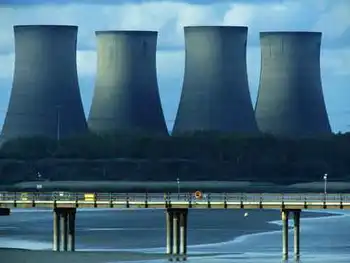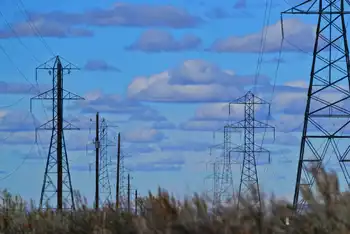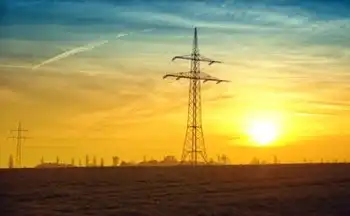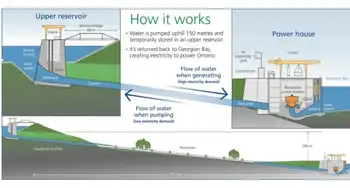Danish island an example of self-sufficiency
By New York Times
CSA Z462 Arc Flash Training - Electrical Safety Essentials
Our customized live online or in‑person group training can be delivered to your staff at your location.

- Live Online
- 6 hours Instructor-led
- Group Training Available
With no traffic lights on the island and few streetlights, driving its roads on a cloudless night is like piercing a black cloud. There is one movie theater, few cars and even fewer buses, except for summer, when thousands of tourists multiply the population.
Yet last year, Samso (pronounced SOME-suh) completed a 10-year experiment to see whether it could become energy self-sufficient. The islanders, with generous amounts of aid from mainland Denmark, busily set themselves about erecting wind turbines, installing nonpolluting straw-burning furnaces to heat their sturdy brick houses and placing panels here and there to create electricity from the islandÂ’s sparse sunshine.
By their own accounts, the islanders have met the goal. For energy experts, the crucial measurement is called energy density, or the amount of energy produced per unit of area, and it should be at least 2 watts for every square meter, or 11 square feet. “We just met it,” said Soren Hermansen, the director of the local Energy Academy, a former farmer who is a consultant to the islanders.
In December, when the United Nations-sponsored summit meeting on climate change convenes in Denmark, many of the delegates will be swept out to visit Samso. They will see its successes, but also how high the hurdles are for exporting the model from this little island, a hilly expanse roughly the size of the Bronx.
On a recent visit, Mr. Hermansen recounted, the Egyptian ambassador to Denmark admired all the energy-creating devices the islanders had installed, then asked how many people lived here. When he was told about 4,000, he replied with exasperation, “That’s three city blocks in Cairo!” Undaunted, Mr. Hermansen told him, “That’s maybe where you should start, not all of Egypt, take one block at a time.”
Jorgen Tranberg, 55, agreed. “If there were no straw, we’d have no fuel, but we have straw,” he said, sipping coffee on the 250-acre dairy farm where he milks 150 Holsteins. “Everywhere is different,” he said. “Norway has waterfalls, we have wind. The cheapest is oil and coal, that’s clear.” The farmers, he said, used to burn the straw on their fields, polluting the air. Now, they use it to heat their homes.
Counting only the wind turbines on the island, but not those that the islanders have parked offshore in the Kattegat Strait, the island produces just enough electricity for its needs. (With the offshore turbines it can even export some.) However, its heating plants, burning wheat and rye straw grown by its farmers, cover only about 75 percent of the islandÂ’s heating needs, continuing its reliance on imported oil and gas.
The islanders have been inventive. Mr. Tranberg uses a special pump to extract the heat from his cowsÂ’ milk, then uses the warmth to heat his house. He has even invested in wind turbines. He purchased one outright for $1.2 million, with a bank loan; it now stands in a row of five just behind his brick farmhouse. He later bought a 50 percent stake in another turbine.
But all that spins is not gold, he soon found out. When a gearbox burned out in one mill three years ago, the repair cost more than $150,000. He did not say how much he makes from selling the electricity.
Energy experts emphasize that it is crucial for the islanders to squeeze energy out of their island without relying heavily on sea-based turbines. Not every region of the world is blessed with an expanse of thousands of miles of ocean at its doorstep.
“Otherwise, it becomes a public-relations exercise,” said Philip Sargent, one of the founders of the Cambridge Energy Forum in England. Yet the experiment could also be useful as a demonstration of technology, he said, or simply to clarify the scale of what is needed, “on densely populated islands like the British Isles.”
Many islanders, like Uffe Bach and his wife, Else Marie, have treated the energy experiment as a profit-making venture. Mr. Bach, 63, who sports a ponytail, is a Johnny Cash fan and boasts that he is the only owner of a Harley-Davidson on the island. He says he did most of the work rebuilding the schoolhouse where they now live, installing a special wood-burning oven to heat the downstairs and laying 1,300 feet of pipe in a field behind the house to pump warmth from the ground to heat the rest of the house.
Ten years ago, the Bachs paid $40,000 for a share in a wind turbine off the south shore, last year pocketing a dividend of $4,700 from the sale of its electricity. Else Marie, 45, said it was only natural for the islanders to embrace the energy project. “People here were poor,” she said. “So they had to think differently.”
On the winding main street of Tranebjerg, whose population of 829 makes it by far the island’s largest town, Jytte Nauntoft, 46, sells appliances in a store that her husband’s family has owned for generations. The islanders, she said, have all the necessary home appliances, like washers and dryers, refrigerators and stoves. Yet, she added, “Electricity is expensive, so they buy the basic models.”
There is no gas, so gas stoves are nonexistent, and the cool climate makes air-conditioners unnecessary. Five years ago, she said, with the help of state subsidies, she and her husband erected a small windmill behind their home, which now supplies almost all their electricity. Like Mr. Bach they use a heat pump to draw warmth from the ground to heat their rooms.
In the bookshop opposite Ms. Nauntoft’s appliance store, Liselotte Andersen, 50, a sales clerk, said “it became natural for us” to embrace the energy project. The project was also crucial, she said, to provide islanders a sense of purpose, and jobs. The island has no high schools, so older children leave for boarding schools or live with relatives off-island after grade school. Many do not return.
Two of Ms. Andersen’s three sons are living off the island. Asked whether she thought they would return, she replied, “We hope some will come back.
“I think the eldest will come back,” she added. “If he found a small farm.”











